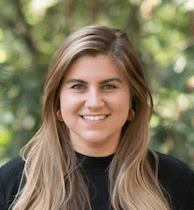Yannell Selman, MBA 21, arrived at Berkeley Haas suffering from what she called “late-stage clinical burnout” from work.
Within months, Selman was working to solve the root causes of her own problem.

That work turned into a startup, Cultiveit, which is building an online wellness platform that human resources departments use to recommend “high-quality time-off” experiences to treat worker burnout.
“Our goal is to shift workplace culture so people have boundaries between working and not working,” said Selman, who co-founded the company with classmate Dunja Panic, MBA 21. The pair met during the UC Berkeley Student Entrepreneurship Program (StEP), which helps students find other entrepreneurs and explore the viability of their startup ideas.

First, Selman and Panic considered a startup focused on kids, screen time, and parental burnout. Then they pivoted to exploring burnout as an adult issue. Last fall, while conducting research, they noticed a pandemic “paradigm shift” as the lack of separation between home and work increasingly impacted workers.
While working on the startup at UC Berkeley’s SkyDeck incubator, they began viewing burnout as not an individual’s problem, but as a systematic issue, connected to how work is structured.
They began viewing burnout as not an individual’s problem, but as a systematic issue, connected to how work is structured.
It starts with “a grind of nonstop work that blends from day to night,” progressing to cynicism that leads to negative attitudes toward clients and your team, Selman said. Finally, there’s helplessness. “You lose hope that anything will change,” Selman said. “You try to make a change but realize nothing works so you quit or get a new job. You take two weeks off, but then the cycle starts again.”
Selman’s leadership on the issue has attracted attention. TaskRabbit CEO Ania Smith wrote a recent Forbes article that cited the benefit of “what burnout consultant Yannell Selman calls “high-quality time off” (HQTO).”
“To qualify as HQTO, employees should engage in activities that are active and support cognitive distance (like rock climbing versus a massage), intrinsically satisfying and reconnect employees to their non-work identities (salsa dancing versus laundry), disconnected (hiking versus watching TV), sensory-stimulating (surfing versus video games) and encourage meaningful growth (woodworking versus social media),” Smith wrote.
Kelli Schultz, a senior people development specialist at TaskRabbit, recently worked with Cultiveit to help employees figure out what HQTO means to them—and urged them to make the most of a paid week off after a busy seasonal period.
After the vacation week, TaskRabbit employees shared photos, emphasizing how they’d challenged themselves. Schultz said she headed to Tennessee where she went went ziplining, left her computer at home, and hit the hot tub when she thought about checking emails.
Results of the company’s twice-annual engagement survey showed the program’s success: a jump of 12 points in employee satisfaction, which Schultz called “amazing, especially during Covid.”
Selman also worked with leaders at content management company Box last July. She held a one-hour info session about burnout, attended by 60 people; 24 people signed up to try a new HQTO experience, said Andrew Chang, corporate finance and strategy manager at Box.
Each participating employee received $50 to spend on experiences ranging from cheesemaking to a botanical garden trip. The feedback from participants was enthusiastic, and planted a seed that company leaders are responding to, Chang said. “Anyone can talk about burnout and what they think it is,” he said. “Yannell tells it to people in a way that’s meaningful. That was the “wow” moment for me.”
Selman is now planning to expand Cultiveit, working on a seed funding round and continuing work with their corporate partners. The company makes money by receiving a percentage of the cost of classes or experiences it promotes to its clients.
“The main thing is that we want to engage with the community,” she said. “We want to meet with more managers and HR leaders who see this as critical and want to participate. Nutrition and meditation aren’t enough to cure burnout. You have to change your work habits.”